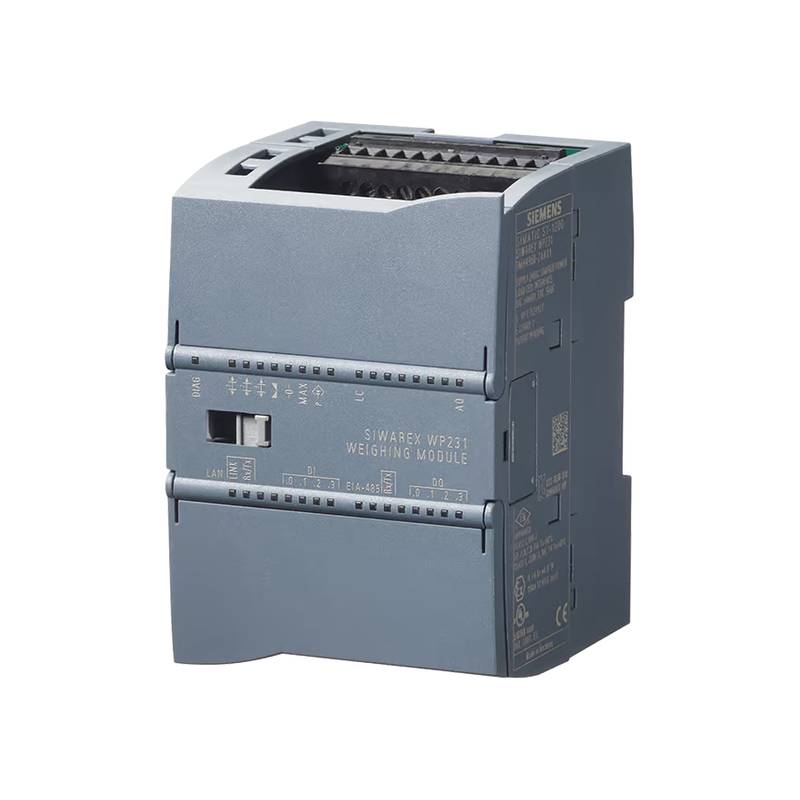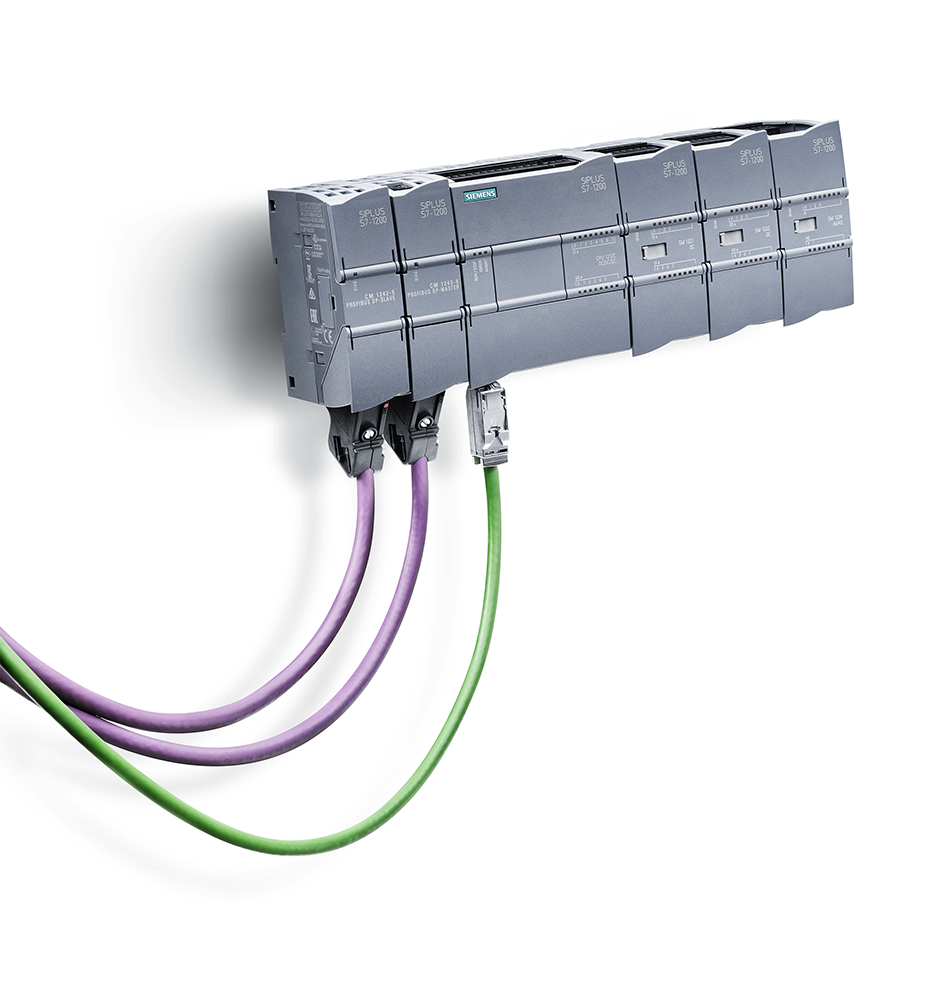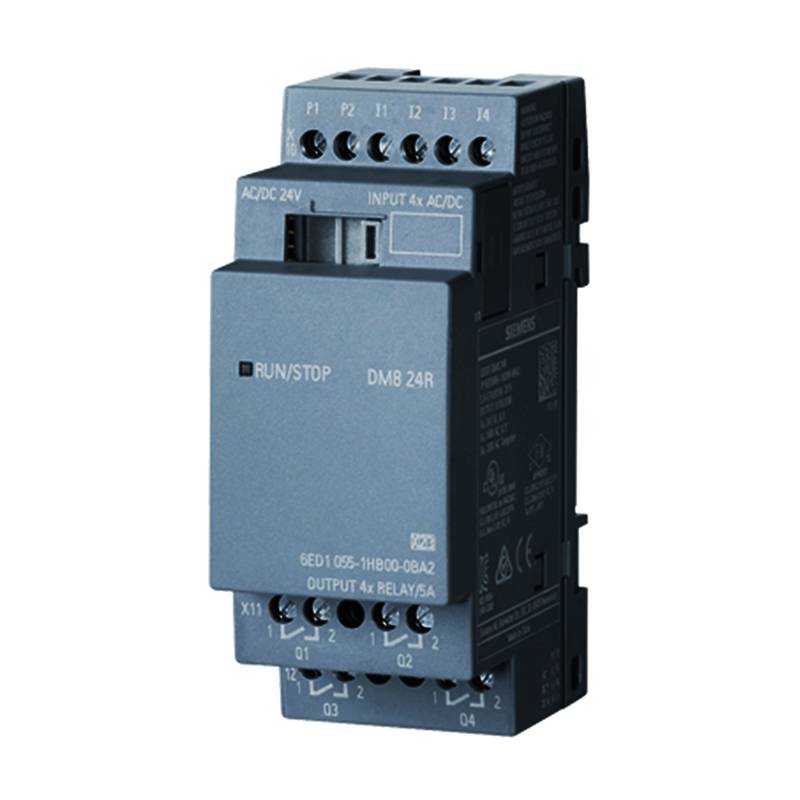
The Siemens 5SY6102-8CC is a single-pole, 2-amp, D-type miniature circuit breaker (MCB) designed for robust motor protection applications. This device offers high breaking capacity and precise tripping characteristics, making it ideal for safeguarding motors against overloads and short circuits. Its D-type curve ensures it can handle the high inrush currents typical of motor startups without nuisance tripping, while still providing rapid protection against short circuits. The 5SY6102-8CC is a critical component for ensuring the longevity and reliable operation of industrial machinery.
Siemens 5SY6102-8CC D-Type Motor Protection Circuit Breaker 1P 2A: Technical Specifications and Advantages
The Siemens 5SY6102-8CC is engineered to provide reliable protection in demanding industrial environments. Its core strength lies in its specialized design for motor circuits, offering a distinct advantage over standard circuit breakers that may not adequately address the unique electrical demands of motors.
| Feature | Specification |
| :--------------------------- | :------------------------------------------ |
| Product Number | 5SY6102-8CC |
| Type | Miniature Circuit Breaker (MCB) |
| Pole Configuration | 1-Pole |
| Rated Current | 2A |
| Tripping Characteristic | D-Type |
| Voltage Rating | 230/400V AC |
| Breaking Capacity | 6 kA |
| Mounting Type | DIN Rail |
| Frequency Rating | 50/60 Hz |
| Temperature Rating | -25 to 45°C |
| IP Rating | IP20 |
| Connection Type | Line/Load Side/Screw |
| Wire Size | 14 to 4 AWG |
| Dimensions (H x W x D) | 90 mm x 18 mm x 70 mm |
| Net Weight | 0.160 Kg |
| Standards | EN 60898-1, UL 1077 (Supplementary) |
Core Features & Market Positioning:
The Siemens 5SY6102-8CC distinguishes itself through its D-type tripping characteristic, which is crucial for motor protection. Unlike B or C curves, the D-type is designed to withstand significant inrush currents experienced during motor startup, which can be 10 to 20 times the rated current. This prevents nuisance tripping and ensures the motor can start reliably, while still offering prompt magnetic tripping for short-circuit protection. This specialized capability positions the 5SY6102-8CC as a superior choice for motor control circuits where standard MCBs might fail to provide adequate protection or lead to operational disruptions. Its robust construction and adherence to international standards like EN 60898-1 and UL 1077 (as a supplementary protector) underscore its reliability and suitability for industrial applications.
Key Application Scenarios:
The Siemens 5SY6102-8CC is ideally suited for protecting individual motors in various industrial settings. Common applications include:
Motor Control Centers (MCCs): Providing individual pole protection for single-phase motors or specific circuits within larger motor control systems. Pumps and Fans: Safeguarding motors used in HVAC systems, water pumps, and industrial ventilation. Conveyor Systems: Protecting motors that drive conveyor belts in manufacturing and logistics. Machine Tools: Ensuring the reliable operation of motors in lathes, mills, and other machining equipment. Ancillary Equipment: Protecting smaller motors used in auxiliary functions within industrial processes.
Its D-curve characteristic makes it particularly valuable for motors with high starting torque requirements or those subject to frequent starts and stops.
Practical System Integration Guidance:
Integrating the Siemens 5SY6102-8CC into an existing electrical system is straightforward due to its standard DIN rail mounting and terminal design. The unit features screw terminals for secure wire connections, accommodating wire sizes from 14 to 4 AWG. It can be installed in either direction on the DIN rail, offering flexibility in panel design. For safe installation, always ensure the power supply is de-energized before making any connections. Qualified personnel should follow local electrical codes and the manufacturer's guidelines to ensure proper installation and wiring. For a single-pole breaker, connections are made to the line and load terminals. The breaker should be wired in series with the motor it is protecting.
Operation and Risk Mitigation:
The 5SY6102-8CC operates by sensing both overload (thermal protection) and short-circuit (magnetic protection) conditions. In case of an overload, a bimetallic strip heats up and bends, eventually tripping the breaker. For short circuits, an electromagnet generates a magnetic field that causes rapid tripping. This dual protection mechanism prevents motor damage, overheating, and potential fires. Risk mitigation involves ensuring the breaker is correctly sized for the motor's load and that it is installed by qualified personnel. Regular inspection of connections and the surrounding environment for any signs of damage or wear is also recommended. Siemens emphasizes that their products should only be used for described applications and that proper installation and maintenance are crucial for safe operation.
Scalability & Long-Term Value:
While the 5SY6102-8CC is a discrete component, its value extends through its compatibility with Siemens' broader SENTRON protection and switching devices portfolio. This allows for seamless integration into larger Siemens-based electrical distribution systems. The inherent reliability and durability of Siemens products contribute to long-term operational value by minimizing downtime and replacement costs. The ability to easily add auxiliary components, such as signaling contacts, can enhance system monitoring and integrate with industrial control systems for improved diagnostics and predictive maintenance strategies, aligning with Industry 4.0 principles.
Frequently Asked Questions (FAQs)
Q1: What is the primary function of a D-type circuit breaker like the Siemens 5SY6102-8CC?
A D-type circuit breaker is primarily designed to handle high inrush currents, making it ideal for inductive loads such as electric motors. It provides protection against short circuits and overloads, but its key feature is its ability to allow significantly higher transient currents during startup without tripping.
This characteristic is essential for applications where motors draw a large surge of current for a brief period when they begin to run. The D-curve's magnetic trip point is set at 10 to 20 times the rated current, distinguishing it from other types like B (3-5x) or C (5-10x) curves.
By selectively tripping only during genuine fault conditions and not during normal startup surges, the 5SY6102-8CC ensures continuous operation and prevents unnecessary downtime, thus optimizing motor performance and longevity.
Q2: Can the Siemens 5SY6102-8CC be used for general household circuit protection?
While the 5SY6102-8CC is a miniature circuit breaker, its D-type tripping characteristic is generally not recommended for typical household circuits. Household circuits usually power resistive loads like lighting and heating elements, or electronic devices that have moderate inrush currents.
For residential applications, Type B or Type C circuit breakers are typically more appropriate. Type B breakers are for standard circuits with low inrush currents, while Type C breakers offer higher inrush tolerance suitable for lighting and socket outlets.
Using a Type D breaker in a home could lead to it not tripping during a fault that a Type B or C would detect, potentially posing a safety risk. It's best used in specific industrial or commercial applications demanding high startup current handling.
Q3: What is the breaking capacity of the Siemens 5SY6102-8CC, and why is it important?
The Siemens 5SY6102-8CC has a breaking capacity of 6 kA. This rating signifies the maximum fault current the circuit breaker can safely interrupt without sustaining damage. In an electrical system, a short circuit can generate extremely high fault currents.
A higher breaking capacity ensures that the circuit breaker can effectively and safely contain and interrupt these potentially destructive fault currents. This protects not only the breaker itself but also connected equipment and the overall electrical installation from damage and fire hazards.
For industrial environments where fault currents can be significantly higher than in residential settings, having an adequate breaking capacity is a critical safety and reliability feature. The 6 kA rating is suitable for many common industrial and commercial applications.
Q4: How does the Siemens 5SY6102-8CC protect against motor overloads?
The 5SY6102-8CC protects motors against overloads through its built-in thermal tripping mechanism. This mechanism typically involves a bimetallic strip that heats up when excess current flows through it for an extended period.
As the bimetallic strip heats, it bends, and this bending action eventually triggers a mechanism that opens the circuit, interrupting the power supply to the motor. This prevents the motor from overheating due to sustained overcurrents, which can damage windings and reduce its lifespan.
The thermal protection is time-delayed, allowing for temporary overcurrents (like motor startup surges) without tripping, but it will reliably trip if the overload condition persists, safeguarding the motor from thermal damage.
Q5: What are the main differences between a D-type MCB and a standard circuit breaker?
The primary difference lies in their tripping characteristics, specifically the magnetic trip point which dictates how much overcurrent is needed to cause an instantaneous trip. Standard circuit breakers, like Type B or C, have lower magnetic trip points designed for general loads.
A D-type MCB has a higher magnetic trip point, typically 10 to 20 times its rated current. This is because motors draw a very high inrush current when they start up. A standard breaker would likely trip unnecessarily during this startup phase.
Therefore, the D-type MCB is specifically engineered for motor protection and other loads with high transient inrush currents, ensuring reliable startup while still providing fast short-circuit protection.
Q6: What is the voltage rating for the Siemens 5SY6102-8CC?
The Siemens 5SY6102-8CC has a voltage rating of 230/400V AC. This rating indicates that the circuit breaker is suitable for use in electrical systems operating at these standard AC voltage levels.
The 230V rating typically applies to single-phase circuits, while 400V is commonly used for three-phase systems. This breaker is single-pole, so it's primarily intended for single-phase motor circuits or as one pole in a multi-pole configuration if needed for specific phase protection.
It is crucial to ensure the circuit breaker's voltage rating matches or exceeds the system voltage to guarantee safe and effective operation and to prevent insulation breakdown or other electrical failures.
Q7: How do I install the Siemens 5SY6102-8CC on a DIN rail?
Installing the 5SY6102-8CC on a DIN rail is a standard procedure for miniature circuit breakers. First, ensure the power to the circuit is completely shut off. The breaker has a clip mechanism at the bottom that allows it to be snapped onto the top or bottom of a standard 35mm DIN rail.
Position the breaker above the desired location on the rail, then push it downwards and slightly inwards towards the rail. You will feel or hear a click as it securely engages with the rail. Removal typically involves using a screwdriver to depress the clip while pulling the breaker away from the rail.
Ensure the breaker is firmly attached to the rail before connecting any wiring. This mounting method allows for quick and easy installation and removal, facilitating panel assembly and maintenance.
Q8: Can this circuit breaker be used as a primary means of protection for a motor?
Yes, the Siemens 5SY6102-8CC, with its D-type characteristic, is specifically designed for motor protection and can serve as the primary overcurrent protection device for motors. It combines overload and short-circuit protection in a single unit.
Unlike a simple fuse, it provides thermal overload protection that can reset after a fault (after cooling down) and can be manually reset after a trip. Its specific design caters to the high inrush currents of motors, preventing nuisance tripping while still offering robust fault interruption.
However, for comprehensive motor protection, it's often used in conjunction with other devices like overload relays (if a separate one is needed for finer adjustment or additional features) or within a motor starter assembly, depending on the application's complexity and safety requirements.
Q9: What is the tripping range for the magnetic protection of the 5SY6102-8CC?
For a D-type tripping characteristic, the magnetic trip point is designed to activate between 10 to 20 times the rated current. For the 2A rated Siemens 5SY6102-8CC, this means the magnetic protection will typically trip if the current surges instantaneously to between 20A and 40A.
This high threshold is crucial for allowing the significant inrush current of a motor during startup (which can be 5-15 times the rated current) to pass without causing the breaker to trip.
Once the motor is running, if a severe short circuit occurs, the breaker will rapidly trip within this high magnetic trip range, providing essential protection against catastrophic electrical faults.
Q10: What type of wire size can be connected to the Siemens 5SY6102-8CC?
The Siemens 5SY6102-8CC supports wire sizes ranging from 14 to 4 AWG. This broad range allows for flexibility in wiring, accommodating various conductor sizes commonly used in industrial installations.
Using the correct wire size is essential for safe and efficient operation. Undersized wires can overheat and pose a fire risk, while oversized wires may not be cost-effective.
The screw terminals ensure a secure connection, and it's vital to torque these connections appropriately as per manufacturer guidelines to prevent loose connections, which can lead to arcing and potential failure.






















